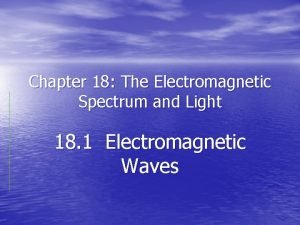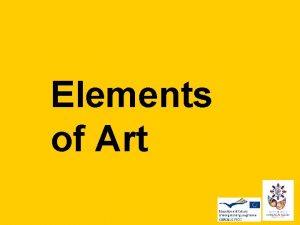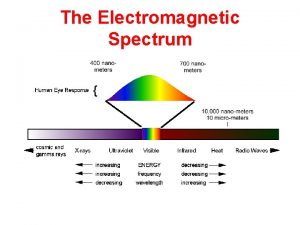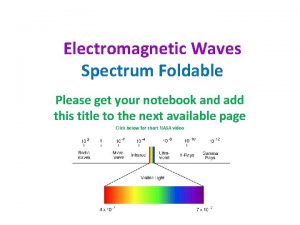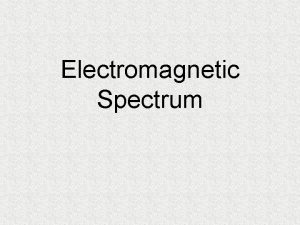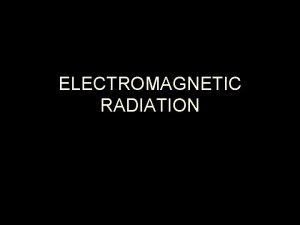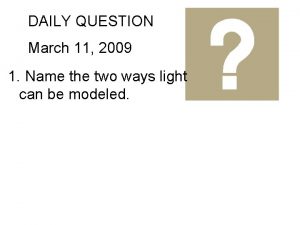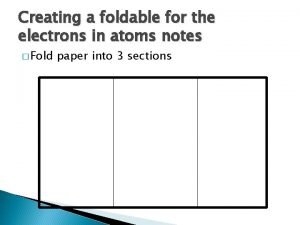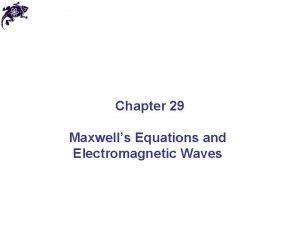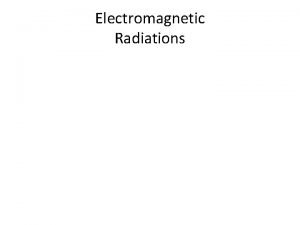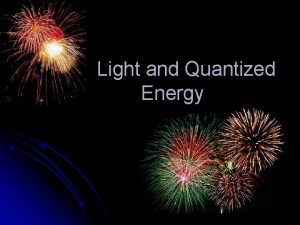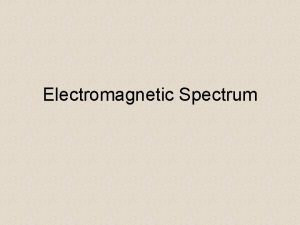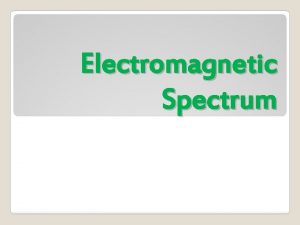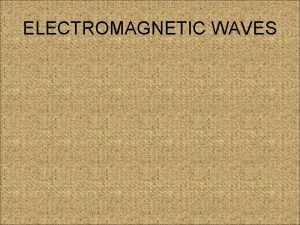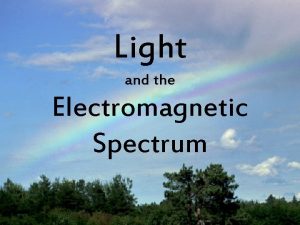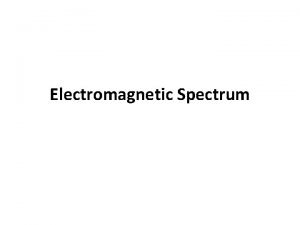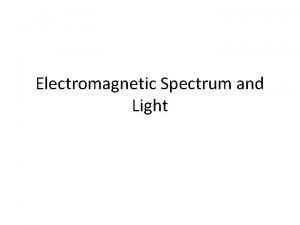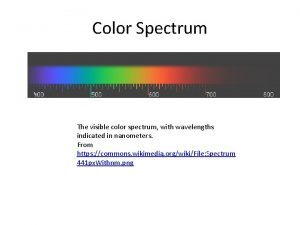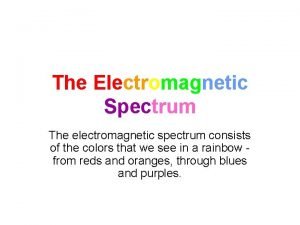Todays Topic Light Color The Electromagnetic Spectrum Electromagnetic



















- Slides: 19

Today’s Topic Light & Color

The Electromagnetic Spectrum Electromagnetic waves consist of alternating, mutually-supporting electric and magnetic fields. The changing magnetic field creates a changing electric field which creates a changing magnetic field.

The Electromagnetic Spectrum An electromagnetic wave is a transverse wave that can travel through a vacuum (i. e. light) light

The Electromagnetic Spectrum All electromagnetic waves travel at the same speed in a vacuum: c = 3 x 8 10 m/s This speed can change in different mediums, but an electromagnetic wave’s frequency will stay the same.


Light & Color The human eye is sensitive to a narrow band of electromagnetic radiation that lies in the wavelength range between 400 and 700 nanometers, commonly known as the visible light spectrum, spectrum which is the only source of color.

Light & Color

Light & Color The colors red, red green, green and blue are called the primary colors of light because they are fundamental to human vision.

Light & Color Objects can only reflect colors present in the original light source.

Light & Color Because light is a transverse wave it can be polarized.

Light Transparent materials transmit light waves and you can see clearly through them. Translucent materials transmit light, but you can’t see clearly through them. Opaque materials absorb or reflect all light that falls on them.

Light & Color Light is said to have a dual nature. It behaves as both a wave and a particle

Light & Color Particle Theory Light is made of a steady stream of particles, much like tiny droplets of water sprayed from a garden hose nozzle.

Light & Color Scientist discovered that, under certain conditions, ultraviolet light could knock out electrons from the atoms of several metals while red light had no effect.

Light & Color Wave Theory Light is wave-like in nature, producing energy that moves through space in a way similar to the ripples spreading across the surface of a still pond after being disturbed by a dropped rock.

Light & Color Interference Constructive interference – when two waves combine to increase in amplitude Compare this to combining forces on an object.

Light & Color Interference Deconstructive interference – when two waves combine to decrease in amplitude Compare this to opposing forces on an object.

Light & Color English physicist Thomas Young performed an experiment that strongly supported the wave theory of light.

Intensity Patterns • Single Slit • Double slit
 Chapter 18 electromagnetic spectrum and light
Chapter 18 electromagnetic spectrum and light Emr spectrum
Emr spectrum The spectrum bent into a circle
The spectrum bent into a circle Light light light chapter 23
Light light light chapter 23 Light light light chapter 22
Light light light chapter 22 Light light light chapter 22
Light light light chapter 22 Line spectrum and continuous spectrum difference
Line spectrum and continuous spectrum difference Absortpion
Absortpion Longest wavelength to shortest
Longest wavelength to shortest Edwin hubble
Edwin hubble Radio waves microwaves song lyrics
Radio waves microwaves song lyrics Electromagnetic spectrum foldable
Electromagnetic spectrum foldable Rabbits mate in very unusual expensive gardens
Rabbits mate in very unusual expensive gardens Electromagnetic spectrum micrometers
Electromagnetic spectrum micrometers Em spectrum mnemonic
Em spectrum mnemonic Electromagnetic spectrum foldable
Electromagnetic spectrum foldable Electromagnetic energy formula
Electromagnetic energy formula How do matter and energy interact when waves are generated
How do matter and energy interact when waves are generated Electromagnetic spectrum
Electromagnetic spectrum Types of radiation in the electromagnetic spectrum
Types of radiation in the electromagnetic spectrum
